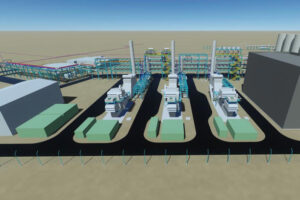Interview: Emma Bridge, chief executive, Community Energy England
Emma Bridge is the chief executive of Community Energy England, an organisation that represents the various different community energy projects across the country. She spoke to Environment Journal about a mixed 2018 for the sector and her concerns about what will replace the feed-in-tariff for small scale energy projects.
How was 2018 for the community energy sector?
Interesting is one word for it! Community energy has slowed down significantly over the last couple of years due to policy changes and a lack of long-term vision and various other things. It’s affecting the rest of the energy sector as well. However, the slowdown in development enabled the sector to take a step back and revisit why community-led energy is important and ask ourselves why we are going through all this blood, sweat and tears to do this on a voluntary basis.
There are some big opportunities and challenges. The IPCC report on climate change was a big thing for our sector, as many community energy practitioners started doing community energy because they wanted a practical way to tackle climate change at a local level. The stark outcomes from that reports revitalised and angered community energy groups who said – why can’t we do more? and why can’t we do this on a bigger scale?
It’s been interesting, frustrating and exciting in equal measures!
What success stories from the sector stand out?
There’s been a trend towards community ownership for private schemes. If we’d gone back five years this was a concept which we wouldn’t have engaged with. We were all about new capacity and decarbonisation and so on. But due to the challenges of new project development last year some groups looked at alternative ways to add value and do good work. So one way is bringing existing assets into community ownership. One lovely example is Mean More windfarm when three community energy co-ops acquired a recently commissioned three-turbine wind farm in Cumbria from its commercial owners.
Why I liked this was it was a lot of hard work and a big partnership effort. They had a huge community backing behind them, between the three groups they have 2500 members. They issued a community funded loan note and raised £2.8m in less than two weeks. They did another and raised another million pounds in two weeks. It’s a nice story of public support around community-owned projects. Mean Moor is next to another community-owned wind farm, so the combined capacity is 11.5 megawatts.
It shows communities can access and deliver complex finance structures. The wind farm now has a firm commercial base and is run for the communities benefit and in an ethical manner. It shows the move towards bigger projects.
Is a misconception of community energy projects that they are small scale in nature and can’t take on the larger, more complex schemes?
The image of crackpots in the back garden doing a project isn’t one that rings true anymore. Community energy is essentially people owning, controlling and benefitting from their energy. The traditional project is local residents coming together to form a cooperative or community interest company because they want to do a local energy project, they then raise money to fund the project – with all profits going back into the local community.
Are you concerned about what will replace the feed-in-tariff and export tariff for small scale renewables?
The Government has confirmed the feed-in-tariff and the export tariff will go at the end of March. They’ve put proposals forward for a Smart Export Guarantee to replace these. That’s out for consultation but there’s a concern it doesn’t give a price guarantee, it’s just greater than zero and it doesn’t say how long the contracts are. At the moment community energy tends to operate on 20-year agreements.
It’s more likely to be one or two years so it’s quite difficult for community energy projects to look at their business model and get that confidence in terms of banks and investors.
There will be a lot more reliance on market mechanisms which is detrimental to the community energy sector because of our democratic nature. It’s harder for us to respond flexibly.
They have said they will consider support mechanisms for community energy and Business Minister Claire Perry has made a lot of positive noises but they have said they are not focused on supporting any one sector. We have our fingers crossed and keep hoping – but we keep getting a lot of empty promises.
How would you rate the Government’s record on renewables?
There doesn’t seem to have been any longer-term stable vision. The rapid removal of smart mechanisms such as the feed-in-tariff makes it difficult to plan. There could have been an easier exit strategy. The feed-in-tariff was incredibly successful and I understand why it was removed for most of the energy sector, but they are bringing in proposals so there will be up to 12 months of uncertainty before we know what will replace it.
Claire Perry seems to have an ambitious vision but it’s not shared across Government departments.















